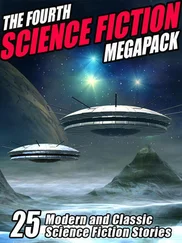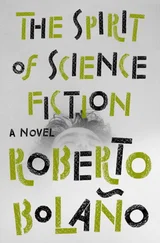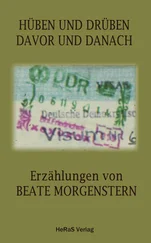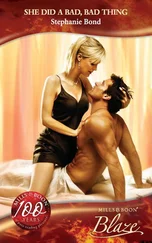Ben Goldacre - Bad Science
Здесь есть возможность читать онлайн «Ben Goldacre - Bad Science» — ознакомительный отрывок электронной книги совершенно бесплатно, а после прочтения отрывка купить полную версию. В некоторых случаях можно слушать аудио, скачать через торрент в формате fb2 и присутствует краткое содержание. Жанр: Публицистика, на английском языке. Описание произведения, (предисловие) а так же отзывы посетителей доступны на портале библиотеки ЛибКат.
- Название:Bad Science
- Автор:
- Жанр:
- Год:неизвестен
- ISBN:нет данных
- Рейтинг книги:5 / 5. Голосов: 1
-
Избранное:Добавить в избранное
- Отзывы:
-
Ваша оценка:
- 100
- 1
- 2
- 3
- 4
- 5
Bad Science: краткое содержание, описание и аннотация
Предлагаем к чтению аннотацию, описание, краткое содержание или предисловие (зависит от того, что написал сам автор книги «Bad Science»). Если вы не нашли необходимую информацию о книге — напишите в комментариях, мы постараемся отыскать её.
Bad Science — читать онлайн ознакомительный отрывок
Ниже представлен текст книги, разбитый по страницам. Система сохранения места последней прочитанной страницы, позволяет с удобством читать онлайн бесплатно книгу «Bad Science», без необходимости каждый раз заново искать на чём Вы остановились. Поставьте закладку, и сможете в любой момент перейти на страницу, на которой закончили чтение.
Интервал:
Закладка:
198 ‘a paper has even found’: Dubben H, Beck-Bornholdt H. Systematic review of publication bias in studies on publication bias. BMJ (2005); 331: 433–4
198 ‘published a paper’: Turner EH, Matthews AM, Linardatos E, Tell RA, Rosenthal R. Selective publication of antidepressant trials and its influence on apparent efficacy. N Eng J Med (17 January 2008); 358 (3): 252–60
199 ‘A classic piece of detective work’: Tramer MR, Reynolds DJM, Moore RA, McQuay, H J. Impact of covert duplicate publication on metaanalysis: a case study. BMJ (1997) 315: 635–40
200 ‘When we carried out’: Cowley AJ et al. Int Journ Card (1993) 40: 161–6
201 ‘the three highest-ranking papers’: Audit identifies the most read BMJ research papers. BMJ (17 March 2007); 334: 554–5
202 ‘It is a shame’: Scolnick EM. Email communication to Deborah Shapiro, Alise Reicin and Alan Nies re: Vigor. 9 March 2000. http://www.vioxxdocuments.com/Documents/Krumholz_Viox x/Scolnick2000. pdf]
202 ‘The New England Journal of Medicine ’: Curfman GD, Morrissey S, Drazen JM. Expression of concern reaffirmed. NEJM (16 March 2006); 354 (11):1193
203 ‘a US company’: Gottlieb S. Firm tried to block report on failure of AIDS vaccine. BMJ (2000); 321: 1173
203 ‘The drug company’: Nathan D, Weatherall D. Academia and industry: lessons from the unfortunate events in Toronto. Lancet; 353; 9155: 771–2
205 ‘These adverts have been’: Gilbody et al. Benefits and harms of direct to consumer advertising: a systematic review. Qual Saf Health Care (2005); 14: 246–50 http://qshc.bmj.com/cgi/content/full/14/4/246
Chapter 11: How the Media Promote the Public Misunderstanding of Science
211 ‘Nick Davies’: Davies N. Flat Earth News . Chatto & Windus (2008)
218 ‘Research on smoking’: Proctor RN. Schairer and Schöniger’s forgotten tobacco epidemiology and the Nazi quest for racial purity. Int. J. Epidemiol 30: 31–4
219 ‘John Ioannidis’: Ioannidis JPA. Why most published research findings are false. PLoS Med (2005) 2 (8): e124
Chapter 12: Why Clever People Believe Stupid Things
227 ‘a classic experiment’: Gilovich T, Vallone R, Tversky, A. The hot hand in basketball: on the misperception of random sequences. Cog Psych (1985); 17: 295–314
229 ‘ingeniously pared-down experiment’: Schaffner PE. Specious learning about reward and punishment. J Pers Soc Psych (June 1985); 48 (6): 1377–86
231 ‘In one experiment’: Snyder M, Cantor N. Testing hypotheses about other people: the use of historical knowledge, J Exp Soc Psych (1979); 15: 330–42
232 ‘The classic demonstration’: Lord CG, Ross L, Lepper MR. Biased assimilation and attitude polarisation: the effects of prior theories on subsequently considered evidence. J Pers Soc Psyc (1979); 37: 2098–109
234 ‘In one, subjects’: Tversky A, Kahneman D. Availability: a heuristic for judging frequency and probability. Cog Psych (1973), 5: 207–32
236 ‘Asch’s experiments’: Asch SE. Opinions and social pressure. Sci Am (1955); 193: 31–5
237 ‘the behaviour of sporting teams’: Frank MG, Gilovich T. The dark side of self-and social-perception: black uniforms and aggression in professional sports. J Pers Soc Psych (January 1988); 54 (1): 74–85
238 ‘It’s not safe’: The experiments in this chapter, and many more, can be found in Irrationality by Stuart Sutherland and How We Know What Isn’t So by Thomas Gilovich
Chapter 13: Bad Stats
239 ‘Let’s say the risk’: Gigerenzer G. Reckoning with Risk . Penguin (2003)
240 ‘Natural frequencies’: Butterworth et al. Statistics: what seems natural? Science (4 May 2001): 853
240 ‘The other methods’: Hoffrage U, Lindsey S, Hertwig R, Gigerenzer G. Communicating statistical information. Science (22 December 2000); 290 (5500): 2261–2
241 ‘there are studies’: Hoffrage U, Gigerenzer G. Using natural frequencies to improve diagnostic inferences. Acad Med (1998); 73: 538–40
253 ‘the same test’: Gigerenzer G. Adaptive Thinking: Rationality in the Real World . Oxford University Press (2000)
253 ‘Let’s think about’: Szmukler G. Risk assessment: ‘numbers’ and ‘values’. Psych Bull (2003) 27: 205–7
257 ‘a small collection’: www.qurl.com/lucia
Chapter 14: Health Scares
262 ‘An academic paper’: Manning N, Wilson AP, Ridgway GL. Isolation of MRSA from communal areas in a teaching hospital. J Hosp Infect (March 2004); 56 (3): 250–1
268 ‘Kruger and Dunning’: Kruger J, Dunning D. Unskilled and unaware of it: how difficulties in recognizing one’s own incompetence lead to inflated self-assessments’. J Pers Soc Psych (1999); 77; 6: 121–34
269 ‘In 1957, a baby’: Brynner R, Stephens TD. Dark Remedy: The Impact of Thalidomide and its Revival as a Vital Medicine . Perseus Books (2001)
270 ‘Philip Knightley’: Excerpted in Pilger J (ed.). Tell me no Lies . Cape (2004)
270 ‘Many years later’: Thalidomide hero found guilty of scientific fraud. New Scientist (27 February 1993)
Chapter 15: The Media’s MMR Hoax
278 ‘12 children’: Wakefield AJ, Murch SH, Anthony A et al. Ileal-lymphoid-nodular hyperplasia, non-specific colitis, and pervasive developmental disorder in children. Lancet (1998); 351 (9103): 637–41
280 ‘one of the few’: e.g. Chess S. Autism in children with congenital rubella. J Autism Child Schizophr (January–March 1971); 1 (1): 33–47
280 ‘it is investigating’: http://briandeer.com/wakefield/wakefielddeal.htm
282 ‘including the BBC’: No jabs, no school says labour MP. http://news.bbc.co.uk/1/hi/health/7392510.stm
288 ‘one survey’: Schmidt K, Ernst E, Andrews. Survey shows that some homoeopaths and chiropractors advise against MMR. BMJ (14 September 2002); 325 (7364): 597
288 ‘Thirty-two per cent’: Hargreaves I, Lewis J, Speers T. Towards a better map: science, the public and the media, Economic and Social Research Council (2003). http://www.esrc.ac. uk/ ESRCInfoCentre/Images/Mapdocfinal_tcm6–5505. pdf
289 ‘peak of the media’: Boyce T. Health, Risk and News: The MMR Vaccine and the Media . Peter Lang Publishing Inc. (2007)
290 ‘published a paper’: Ibid.
291 ‘ not a single one ’: Durant J, Lindsey N. GM foods and the media. Select Committee on Science and Technology, Third Report, Appendix 5 www.publications.parliament. uk/pa/ld199900/ldselect/ldsctech/ 38/3810. htm
295 ‘a systematic review’: Smeeth L, Cook C, Fombonne E, Heavey L, Rodrigues LC, Smith PG et al. MMR vaccination and pervasive developmental disorders: a case-control study. Lancet (2004); 364 (9438): 963–9
297 ‘This study was big’: Madsen KM, Hviid A, Vestergaard M, Schendel D, Wohlfahrt J, Thorsen P et al. A population-based study of measles, mumps, and rubella vaccination and autism. N Eng J Med (2002); 347 (19): 1477–82
300 ‘Scientists in America’: http://www.telegraph.co. uk/news/ main. jhtml? xml=/news/2002/06/23/nmmr23.xml
302 ‘a very similar study’: Afzal MA, Ozoemena LC, O’Hare A et al. Absence of detectable measles virus genome sequence in blood of autistic children who have had their MMR vaccination during the routine childhood immunization schedule of UK. J Med Virology (2006); 78; 5: 623–30
303 ‘Another major paper’: D’Souza, Y, et al. No evidence of persisting measles virus in peripheral blood mononuclear cells from children with autism spectrum disorder. Pediatrics (4 October 2006); 118: 1664–75
Читать дальшеИнтервал:
Закладка:
Похожие книги на «Bad Science»
Представляем Вашему вниманию похожие книги на «Bad Science» списком для выбора. Мы отобрали схожую по названию и смыслу литературу в надежде предоставить читателям больше вариантов отыскать новые, интересные, ещё непрочитанные произведения.
Обсуждение, отзывы о книге «Bad Science» и просто собственные мнения читателей. Оставьте ваши комментарии, напишите, что Вы думаете о произведении, его смысле или главных героях. Укажите что конкретно понравилось, а что нет, и почему Вы так считаете.





![Роман Зыков - Роман с Data Science. Как монетизировать большие данные [litres]](/books/438007/roman-zykov-roman-s-data-science-kak-monetizirova-thumb.webp)






